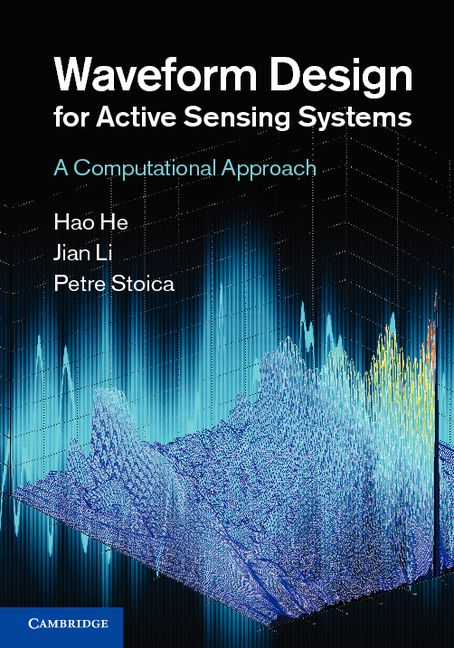
| Waveform Design for Active Sensing Systems -- A Computational Approach | |
|---|---|
 |
Hao He, University of Florida, Gainesville, FL, USA Jian Li, University of Florida, Gainesville, FL, USA Peter Stoica, Uppsala University, Uppsala, Sweden ISBN: 978-1-107-01969-0 |
This book discusses state-of-the-art computational algorithms for waveform design in active sensing systems. Waveforms are designed to achieve certain desired properties, which are divided into three categories (corresponding to the three major parts in the book), namely good aperiodic correlations, good periodic correlations and beampattern matching. Various application examples of using the newly designed waveforms are provided, including radar imaging, channel estimation, an ultrasound system for medical treatment and covert underwater communications. Besides numerical results, theoretical analysis is presented, whenever available, that describes performance lower bounds or limitations.
Discussions in the book lean toward formulating practical problems mathematically and solving the mathematical problems using optimization techniques. Particular attention is paid to making the developed algorithms computationally efficient. Most algorithms are presented with a table that lists the iteration steps clearly.
Show Table of ContentsMatlab Code
Start from main.m in each chapter. Each main.m file is divided into cell groups (delimited by %%) that correspond to individual examples in the book. Some examples can take a long time to execute; in such cases precomputed data are provided in the mat format.
- Common functions used in all chapters
- Chapter 1
- Chapter 2
- Chapter 3
- Chapter 4
- Chapter 5
- Chapter 6
- Chapter 7
- Chapter 8
- Chapter 9
- Chapter 10
- Chapter 11
- Chapter 12
- Chapter 15
Presentation Slides for Instructors
- WaveformDesign Overview
- Radar Signal Tutorial part 1
- Radar Signal Tutorial part 2
- Radar Signal Tutorial part 3
- Chapters 1 and 2
- Chapters 3 and 4
- Chapters 5 and 6
- Chapters 7 and 8
- Chapters 9 to 12
- Chapters 13 to 14
We would like to thank P Babu, M Bjork, D Jansson, M Soltanalian and E Zenteno for providing some of the above sets of slides.